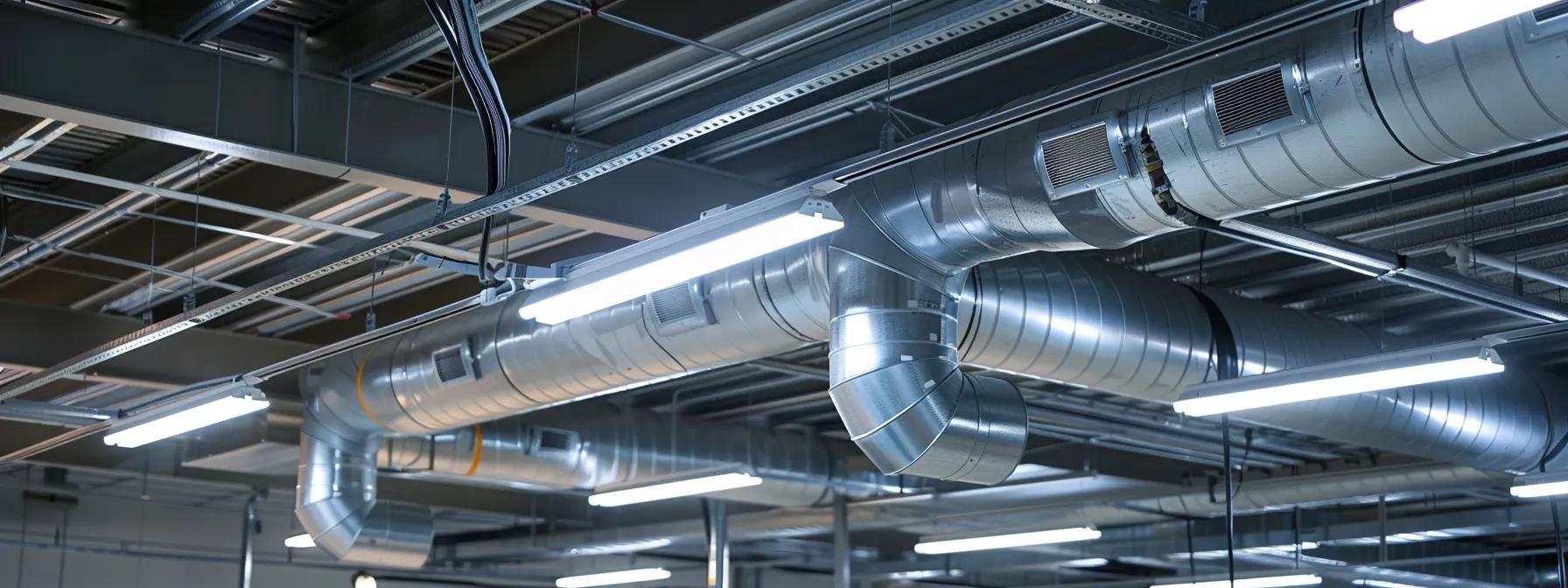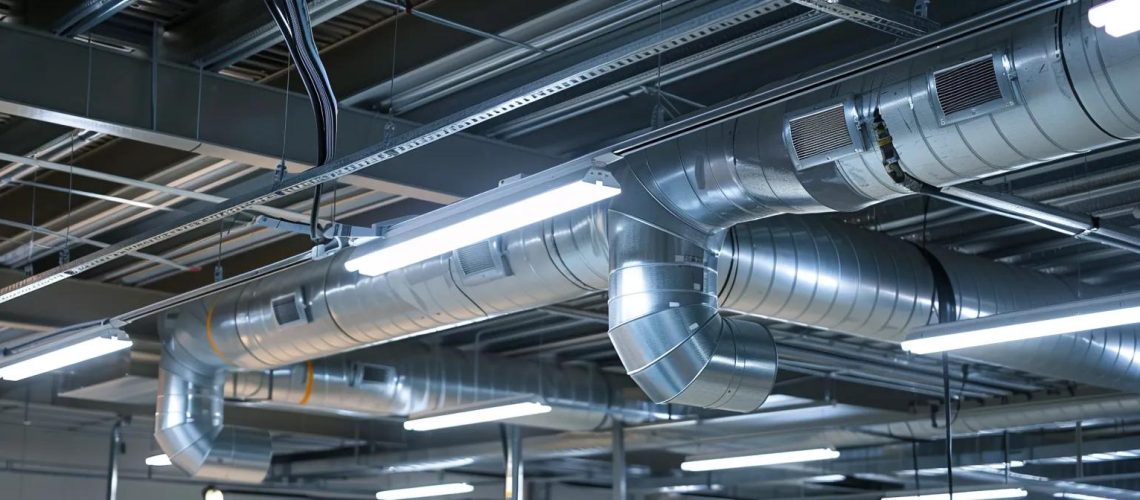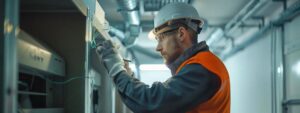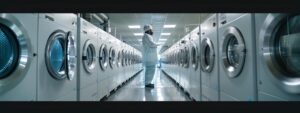
Common Mistakes During Ductwork Replacement to Avoid: How to Ensure Proper Installation and Energy Efficiency
Introduction
Ductwork replacement is a critical component in maintaining an efficient HVAC system, especially for homeowners and businesses looking to improve indoor air quality and reduce energy bills. Improper installation can lead to poor airflow, inefficient heating and cooling, and increased energy costs. This comprehensive guide details the most common installation errors, how to detect early signs of poor duct performance, and a practical replacement checklist. Homeowners often face challenges when vent placement, insulation, or sealing are performed incorrectly. Selecting the right duct materials also greatly affects system longevity and performance. With insights from experienced HVAC contractors and industry professionals, this guide emphasizes precision in duct sizing, sealing, and placement. It also explains how regular inspections and proper material selection can significantly improve energy efficiency and reduce maintenance costs over time. The sections below answer frequently asked questions regarding ductwork replacement and provide clear, actionable insights for a successful project.
What Are the Most Common Ductwork Installation Errors to Watch For?
When replacing air ducts, a major mistake is installing the ductwork without proper planning. Common installation errors include improper duct sizing, poor sealing, inadequate insulation, excessive sharp bends that restrict airflow, and incorrect vent placement. Each error diminishes the HVAC system’s performance and energy efficiency.
How Does Improper Duct Sizing Affect System Performance?
Improper duct sizing hampers the system’s ability to deliver the correct airflow. Ducts that are too small increase air velocity, causing noise and pressure drops, while oversized ducts lead to stagnant air and uneven distribution. Even a 10% deviation from recommended sizing can reduce system efficiency by up to 15%. Correct sizing ensures the HVAC unit runs optimally with balanced airflow, lower utility costs, and increased equipment lifespan.
Why Is Poor Duct Sealing a Major Energy Efficiency Problem?
Poor duct sealing causes significant energy loss by allowing air to escape before reaching its destination. Leaks at duct joints can result in up to 30% energy loss, driving up heating and cooling bills. Unsealed ducts mix conditioned air with outside air and reduce indoor comfort. Using quality sealants and proper installation techniques—often verified by blower door tests—can effectively prevent these issues and improve overall system performance.
What Risks Come From Lack of Proper Duct Insulation?
Inadequate duct insulation causes conditioned air to lose its temperature, especially when ducts pass through unconditioned spaces such as attics or crawl spaces. Without sufficient insulation, ducts can experience temperature fluctuations, leading to condensation, moisture buildup, and even mold growth. In extreme conditions, uninsulated ducts risk freezing or overheating, thereby stressing the HVAC system. Manufacturers recommend using insulation with high R-values to stabilize temperature, reduce noise, and extend the life of duct components.
How Do Sharp Bends and Turns Impact Airflow?
Sharp bends and abrupt turns disrupt steady airflow by creating turbulence and pressure drops. When air is forced through multiple tight turns, kinetic energy is wasted as frictional heat, reducing the air volume delivered to each vent. Each 90-degree bend can cause a 10-15% airflow loss. Employing gradual curves and proper fittings instead of abrupt angles helps maintain efficient airflow and reduces energy loss.
Why Is Incorrect Vent Placement a Frequent Mistake?
Improper vent placement leads to uneven temperature distribution and poor indoor air quality. Vents placed in obstructed or distant areas prevent effective circulation. Proper vent placement requires careful planning based on room layout and potential obstacles. HVAC professionals perform airflow mapping to determine optimal vent locations so that each room receives balanced conditioned air, enhancing overall comfort and efficiency.
How Can You Identify Signs of Poor Ductwork Installation Early?
Early detection of ductwork issues is vital for timely repairs and maintaining system performance. Recognizing warning signs helps homeowners take corrective action before energy losses become significant.
What Are the Tell-Tale Signs of Duct Leaks and Airflow Issues?
Inconsistent room temperatures and unusually high utility bills are common indicators of duct leaks. Homeowners may notice hot or cold spots even after adjusting thermostats. Visible dust accumulation around duct joints, along with whistling or hissing sounds, further suggests leaks. Tools like blower door tests or thermal imaging can confirm these suspicions, allowing professionals to quickly address the problem.
How to Diagnose Ductwork Problems With Basic Inspection Techniques?
A simple visual inspection can reveal many duct issues. Homeowners should look for signs of physical damage, disconnected joints, and deteriorated insulation. Listening for unusual sounds when the HVAC system is running and using a smoke pencil or incense stick to observe airflow can pinpoint leaks or blockages. Regular checks around registers can also identify dust buildup or uneven airflow suggestive of duct faults.
What Testing Methods Detect Hidden Duct Leaks?
Advanced methods such as pressure testing, duct blaster tests, and infrared thermography are very effective in detecting hidden duct leaks. Pressure testing measures pressure differences to quantify leakage, while infrared cameras highlight thermal losses along ducts. These methods provide a complete evaluation of duct performance and ensure that hidden leaks are reliably identified and remedied.
What Steps Should Be Included in a Ductwork Replacement Checklist?
A systematic checklist is essential for successful ductwork replacement. This guide covers preparation, installation, and post-installation testing to enhance energy efficiency and reduce replacement costs.
How to Plan and Prepare for a Successful Ductwork Replacement?
Successful replacement begins with a thorough assessment of the current duct system. Homeowners should consult HVAC professionals to evaluate duct sizes, assess possible leaks, and inspect insulation quality. Developing a detailed blueprint—including precise measurements, airflow analysis, and relevant environmental factors—and setting a realistic budget and timeline is crucial. Scheduling inspections and obtaining necessary permits further smooth the process.
What Are the Essential Installation Steps to Avoid Mistakes?
A precise installation process ensures efficient airflow and enhanced energy savings. Key steps include: • Measuring and cutting ducts accurately per the blueprint.
• Securing all connections with high-quality sealants and tapes to eliminate leaks.
• Properly insulating ducts that pass through unconditioned spaces.
• Installing gradual bends rather than sharp corners to minimize pressure loss.
• Conducting final tests, such as blower door or pressure tests, to verify performance.
When Is DIY Ductwork Replacement Risky and What Mistakes to Avoid?
While DIY projects may lower upfront costs, they often lead to mistakes such as incorrect measurements, poor sealing, and inadequate insulation. Amateur installations can result in compliance issues with local codes and increased energy waste. Homeowners are encouraged to reserve detailed work—like precise measurements and sealing—for certified HVAC technicians while handling only basic inspections themselves.
How Do You Choose the Right Ductwork Materials to Prevent Replacement Errors?
Choosing the correct ductwork materials is key to ensuring durability, optimal performance, and energy efficiency over the long term. Material selection impacts both installation ease and future maintenance.
What Are the Pros and Cons of Metal, Fiberglass, and Flexible Ducts?
• Metal ducts (usually galvanized steel) are extremely durable, fire-resistant, and long-lasting; however, they require precise installation to prevent corrosion and reduce noise.
• Fiberglass ducts provide excellent thermal insulation and noise reduction, but may experience degradation over time and demand meticulous sealing.
• Flexible ducts are easier to install in tight spaces yet can sag and restrict airflow if not properly supported.
Evaluating these options with a professional ensures the selected material meets performance and maintenance requirements.
How Does Material Choice Affect Energy Efficiency and Longevity?
The right material reduces friction losses and energy consumption. Metal ducts resist moisture and wear over decades, while insulated fiberglass ducts help maintain stable temperatures and efficient airflow. A carefully chosen material minimizes future maintenance, ensures long-term savings on energy bills, and contributes to a consistent indoor climate.
What Factors Should Influence Your Ductwork Material Decision?
Key considerations include the local climate, building layout, HVAC system requirements, installation complexity, and available budget. In harsh climates, superior insulation is critical. In commercial settings, durability and adherence to safety standards are paramount. Consulting HVAC experts and evaluating the building’s specific needs help ensure the selected duct material delivers optimal performance and longevity.
What Are the Cost Factors and Long-Term Benefits of Proper Ductwork Replacement?
Understanding cost influences and long-term benefits makes it easier for homeowners to invest wisely in ductwork replacement. While upfront expenses may be higher, proper installations yield significant future savings.
Which Elements Most Influence Ductwork Replacement Costs?
Cost factors include the quality of materials, local labor rates, system complexity, and additional services such as insulation, contamination removal, or pest proofing. A detailed quote from a reputable HVAC contractor helps homeowners balance initial costs against long-term energy savings and reduced maintenance needs.
How Does Quality Installation Save Money Through Energy Efficiency?
A well-installed duct system minimizes leaks, reduces friction losses, and maintains efficient insulation, leading to energy savings of 20-30%. Over time, such improvements translate into lower utility bills and reduced premature equipment wear, offsetting the higher initial investment and contributing to a longer HVAC lifespan.
What Maintenance Practices Extend the Life of New Ductwork?
Regular professional inspections, prompt filter replacements, routine duct cleaning, and periodic pressure tests are essential. These maintenance practices help detect minor issues before they become major problems, ensuring the system continues to operate efficiently and extends the life of the ductwork.
How Can Homeowners Avoid DIY Ductwork Replacement Mistakes?
DIY ductwork replacement can be risky. Homeowners should be aware of common pitfalls and know when to call a professional to avoid costly mistakes.
What Are the Common Pitfalls in DIY Ductwork Replacement?
Frequently encountered DIY issues include inaccurate measurements, low-quality materials, and inadequate sealing. Many amateurs neglect proper insulation or fail to support flexible ducts, resulting in sagging and airflow obstruction. Without proper tools, thorough testing is challenging, and even minor errors can significantly diminish system performance.
When Should You Hire a Professional Instead of DIY?
Professional help is advised when the duct layout is complex, involves inaccessible areas, or requires precise measurements and advanced testing. If previous DIY fixes have led to recurring problems, hiring a certified HVAC contractor ensures compliance with local codes and long-term reliability.
How to Safely Inspect and Maintain Ductwork Between Replacements?
Homeowners can perform basic inspections by checking duct seams, listening for unusual sounds, and using simple tools like a smoke pencil to detect leaks. Regular filter changes and annual professional cleanings further help maintain the system until a full replacement is necessary.
What Are the Key Signs That Indicate It’s Time to Replace Your Ductwork?
Recognizing early signs of failing ductwork prevents increased energy costs and deteriorating indoor quality. Timely replacement can avert severe system damage.
How Do Uneven Temperatures Signal Ductwork Problems?
Noticeable differences in room temperatures often indicate duct leaks or blockages. When some areas warm up or cool down more slowly, it is a clear sign that conditioned air is not being evenly distributed. This imbalance forces the HVAC system to work harder, reducing overall efficiency.
Why Do High Energy Bills Often Point to Faulty Ductwork?
Unexpected, high energy bills can signal that heated or cooled air is escaping before it reaches its destination. Faulty ductwork forces the system to operate longer and harder, resulting in wasted energy and increased costs. Correcting duct leaks can lead to noticeable utility savings.
What Role Does Dust Accumulation Play in Ductwork Health?
Excess dust around duct joints is a sign of poor sealing. Dust infiltration not only compromises air quality but can also indicate that leaks are allowing unfiltered air into the system. Regular cleaning and professional inspections help ensure that duct installation remains tight and effective.
Table: Ductwork Replacement Cost and Energy Efficiency Comparison
Below is a table summarizing key elements affecting ductwork replacement costs and their associated long-term energy benefits.
| Element | Cost Impact | Energy Efficiency Benefit | Long-Term Benefit | Example/Case Study |
|---|---|---|---|---|
| Material Quality | High if premium | Superior insulation and durability | Savings on energy over 10-15 years | Metal ducts vs. flexible ducts comparison |
| Labor and Installation | Varies by region | Accurate installation reduces airflow loss | Reduced maintenance and repair costs | Certified HVAC installation improves output |
| Insulation and Sealing | Moderate additional cost | 20-30% energy savings | Lower utility bills | Effective sealing leads to 25% savings |
| System Complexity | Higher cost for customization | Optimized design ensures even air distribution | Improved comfort and performance | Custom duct layouts for multi-zone control |
| Testing and Quality Control | Minimal if included | Identification of leaks reduces wastage | Enhanced system reliability | Blower door and infrared testing use |
Before the table, it is essential to understand that investing in high-quality materials and professional installation methods leads to significant energy savings and a reliable HVAC system.
After reviewing the table, it is clear that while initial costs may be higher, proper installation and quality materials provide long-term benefits by reducing energy consumption and maintenance expenses.
Frequently Asked Questions
Q: How can homeowners tell if their ductwork has leaks?A: Homeowners can detect duct leaks through uneven room temperatures, hissing noises, increased energy bills, and visible dust buildup near seams. Simple tests like using a smoke pencil or thermal imaging, along with regular inspections, can help confirm leaks early.
Q: What is the ideal duct insulation thickness for energy savings?A: Typically, a minimum of R-6 to R-8 insulation is recommended for ducts in unconditioned spaces. In colder climates, thicker insulation helps reduce heat loss, ensuring consistent indoor temperatures and improved energy savings.
Q: Can improper ductwork installation affect indoor air quality?A: Yes, poorly sealed ducts can introduce dust, allergens, and mold spores into indoor spaces, compromising both air quality and energy efficiency.
Q: What maintenance practices are recommended post-duct replacement?A: Regular professional inspections, timely filter replacements, periodic cleaning, and pressure tests are recommended to keep the duct system operating efficiently and extend its lifespan.
Q: Is it always better to hire a professional for ductwork replacement?A: Generally, hiring a certified HVAC contractor is advisable due to the precision required in measurement, sealing, and insulation. While minor repairs might be tackled independently, complete duct replacement is best handled professionally.
Q: How do sharp bends in the ductwork affect airflow?A: Sharp bends cause turbulence and frictional losses, reducing airflow efficiency. Gradual curves and properly designed fittings help maintain steady airflow and optimize system performance.
Q: What factors should influence the selection between metal, fiberglass, or flexible ducts?A: Material selection depends on environmental conditions, installation location, and performance requirements. Metal offers durability and fire resistance; fiberglass provides insulation and noise reduction; flexible ducts enable ease of installation in tight spaces, though they may need extra support.
Final Thoughts
Proper ductwork replacement is essential for ensuring energy efficiency, indoor comfort, and long-term system reliability. By avoiding mistakes such as improper sizing, inadequate sealing, poor insulation, excessive sharp bends, and incorrect vent placement, homeowners can greatly enhance HVAC performance. The steps and techniques outlined above offer a clear framework for identifying problems, implementing effective solutions, and maintaining an efficient duct system. Investing in quality materials and professional installation not only reduces energy costs but also minimizes future maintenance issues. Regular maintenance and timely expert consultations are the keys to a reliable ductwork system that supports optimal indoor climate control.







